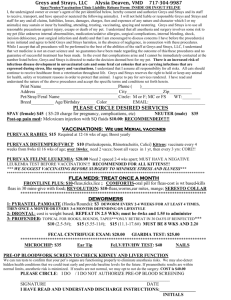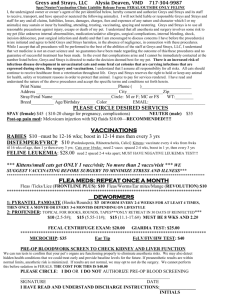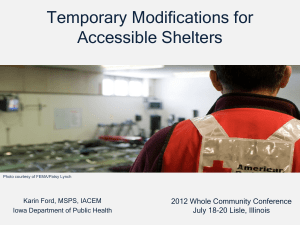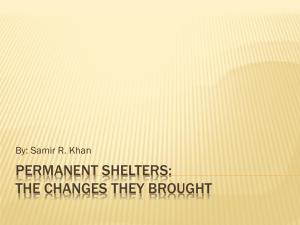Keynote: Understanding shelter animal behavior
advertisement
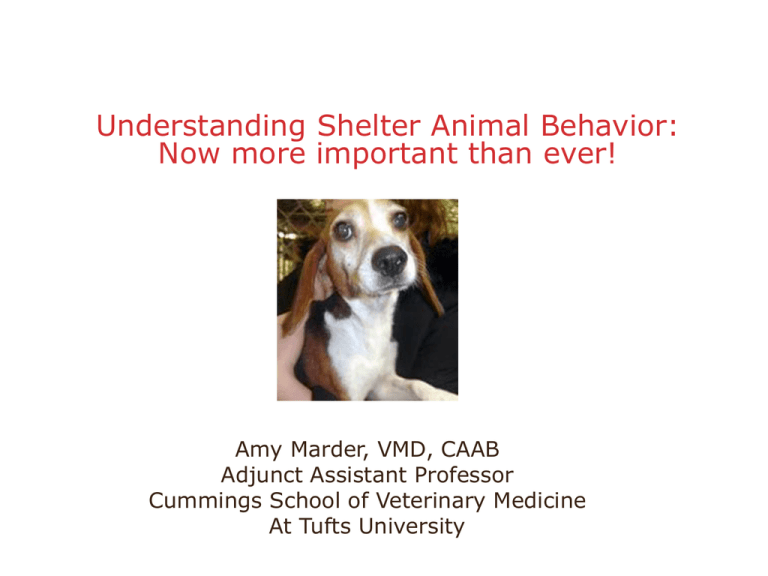
Understanding Shelter Animal Behavior: Now more important than ever! Amy Marder, VMD, CAAB Adjunct Assistant Professor Cummings School of Veterinary Medicine At Tufts University Historical Perspective • PAST* • PRESENT • FUTURE *Steve Zawistowski The Past* Drowning Drowningof of Strays Strays* Drowning Strays ASPCAof 1866* Henry Bergh mourns the strays Drowning of Strays City Refuge* Accepted Philadelphia’s strays and unwanted dogs and cats First humane animal shelter Provided medical treatment Placement into new homes Humane Euthanasia Drowning of Strays New York City Trend (1894-1994)* Drowning of Strays Program Developments* Drowning of Strays Program Developments* 1946 – Post WWII veterinary focus on companion animals Dr. Mark Morris 1970s – emphasis on spayneuter to control populations 1974 – A modest proposal Drowning of Strays Applied Animal Behavior 1974 – Tuber, Hothersall and Voith. Animal Clinical Psychology: A modest Proposal. American Psychologist. 1976 - American Society of Veterinary Ethology 1980s – Behavior programs appear at animal shelters 1991 – Animal Behavior Society Certification for Applied Animal Behaviorists 1993 – American College of Veterinary Behavior Drowning of Strays Applied Animal Behavior in Shelters 1974 – Tuber, Dayton . 1980s – Zawistowski, Hetts behavior programs appear at animal shelters (ASPCA, DDFL) 1993 - 2004 National Council on Pet Population 1998 - Center for Behavioral Therapy ASPCA 2001- Animal Rescue League of Boston 2006 - Center for Shelter Dogs The Present The Present Changing World for Shelter Dogs • Fewer dogs are being handled by shelters • Reluctance to euthanize for space •Desire to eliminate avoidable euthanasia • More need to identify and manage behaviors •More dogs being handled by less structured, grass-roots networks (rescue, foster, transport) •Dogs are being transported •Internet has made dog rescue global and desirable The Need is Great • Many shelters are evaluating dog and cat behavior • Shelters are being pressured to do evaluations and institute behavioral programs • Behavior evaluations are not or only partially validated and the effectiveness of enrichment and behavior treatment programs is hardly known • Predictability of behavior evaluations • Effectiveness of JM program The Time is Right • Growing expertise in companion animal behavior (CAAB, ACAAB, DACVB, CPDT) • Increased volume and quality of scientific literature on shelter animal behavior (journals, online journals) • Textbook on shelter behavior • Ability to keep statistics • Great interest in modifying behavior 8 7 2008 6 2009 5 2010 4 2011 3 2012 2 2013 1 2014 0 Published articles The Time is Right • Great interest in measuring and understanding the influence of stress on behavior • Great interest in debunking shelter myths • Black dogs • Getting pets as gifts • Identifying breeds • Associating behavior and breed • Treating each animal as an individual •“Because every dog is different” The FUTURE • Use what we have learned and will learn to save more animals lives • Food aggression • Behavior evaluations • Play groups • Work together to leave our old ways and establish new ways based on research •Shelters •Universities •Coalitions •Organizations Thank you for your attention!


